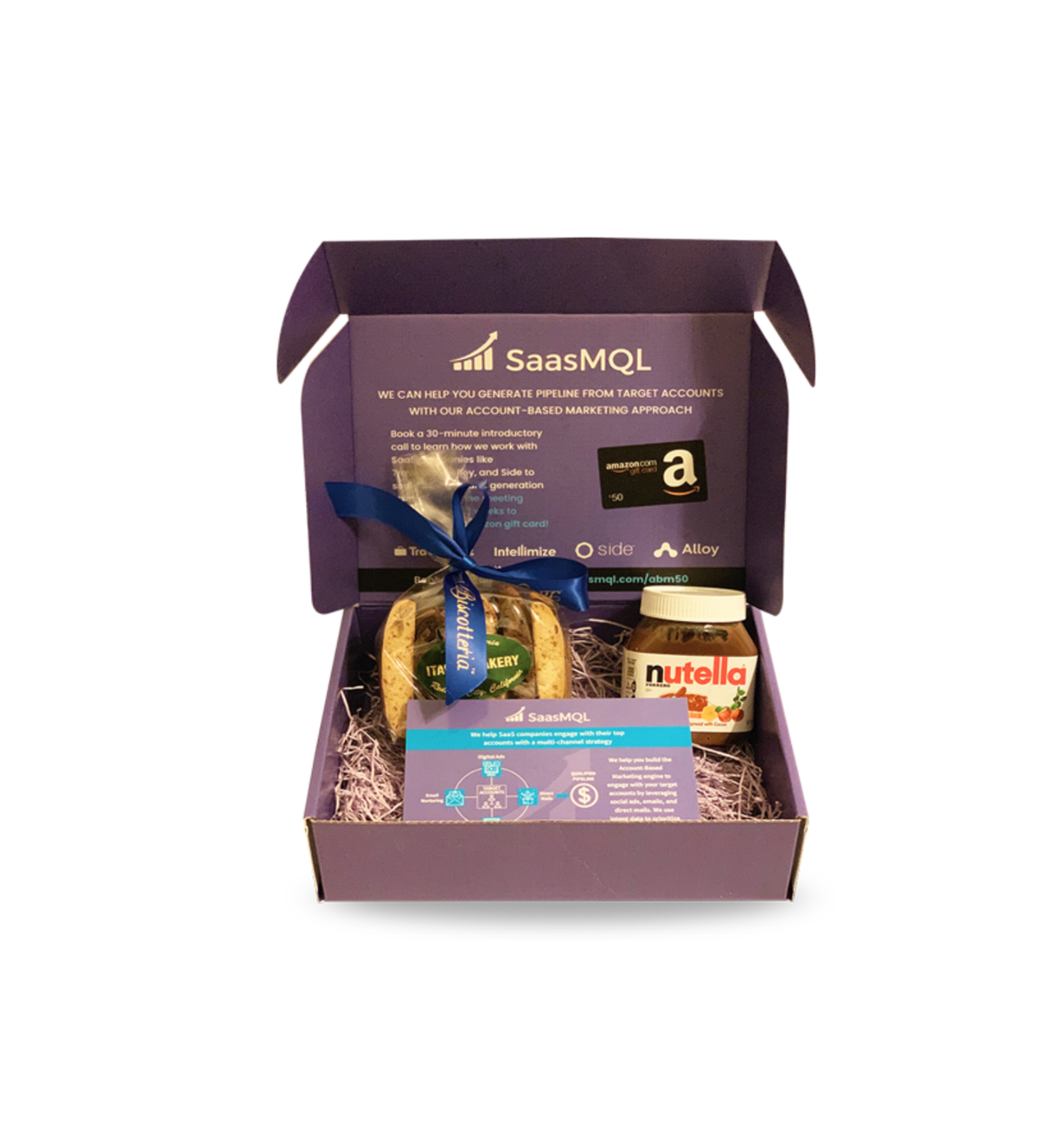
In 2020, modern ABM marketers are seeing direct mail emerge as an effective channel for B2B companies to engage and convert target accounts. When direct mail campaigns are integrated into a broader account-based marketing strategy, they become a powerful channel to break through the noise and reach your ideal contacts.

How many emails did you receive last week? How many of these do you remember? We receive an average of 121 emails a day - some work, some promotional, some spam, some newsletters, and some in between. It’s difficult to make a real impact in ABM using only email outreach, considering cold outreach emails can get filtered or go to spam. Now, how many packages did you receive at your desk last week? Given the special nature of a direct mail package, it’s no wonder the average response rates are so much higher than email, with direct mail seeing 4.4% and email only 0.12%. Receiving a nice gift right at your desk in the middle of the work week is memorable, and shows that the sender made the effort to do something different.
Direct mail used to be a logistical hassle, expensive, and time-consuming. Today, however, it can be automated. Tools like Marketo allow you to integrate your vendor with the CRM, so that you can build a library of mailers and trigger sends, (more on that later). Despite these new developments, at this point in time only about 38% of B2B companies are running Direct Mail campaigns. Get ahead of the curve by learning how to implement Direct Mail in your marketing campaigns.
There are three levels of maturity when implementing Direct Mail. We recommend starting with Stage 1 and scaling your efforts gradually to Stage 3.


Now that we’ve laid out the different stages of direct mail campaigns, there are many different goals your company can accomplish with direct mail. The first and most common is to generate qualified meetings. These mailers have a clear call-to-action (CTA) to take a demo, and usually come with an incentive such as a gift card. This kind of direct mail campaign must be followed by an email campaign to follow-up with the contact after they receive the box. Next are awareness campaigns, these can be a great way to warm cold leads or nurture dormant leads with a small gift, chocolate, or company swag, and a signed note.

If you are hosting or sponsoring a trade show or conference, you can send an event invite to drive people to your booth or speaking session (maybe with an incentive if they show up with the invite), and an event follow-up to attendees who have not engaged. You can also use a custom mailer to invite prospects to register for your upcoming webinar.
Finally, you can trigger a new client welcome package to your champion and their team once a new client signs the agreement. For now, we will dive into the steps that go into building an example direct mail campaign with the goal of generating meetings and pipeline.
1. Build a branded box containing a one-pager, a box of nice caramels, and an offer for a $50 Amazon gift card (or another similar incentive).
2. Add a CTA for a personalized demo with a deadline to receive the gift card
3. Select a list of ideal contacts from target accounts that will receive the box
a. Who is not happy with our competitors?
b. Who has contracts coming up for renewals with a competitor
c. Who is the right decision maker person/title/seniority?
4. Before the boxes ship, start a sales email sequence to these contacts, prompting them to accept the offer
5. Drive contacts to a custom landing page to request the personalized demo
6. Follow-up with contacts and convert them into opportunities
7. Track campaign ROI in Salesforce


Over and over we’ve seen Direct Mail campaigns exceed ROI expectations. Take for example Company A’s $30,000 investment in 1,000 direct mailers at $30/ea. They sent 100 packages a week for one quarter, and targeted 704 accounts within their ideal customer profile (ICP). After 3 months this campaign generated 37 opportunities at $810/Opp, for a total of $1.7MM in Pipeline.
We’ve learned several lessons running countless direct mail campaigns, month after month: